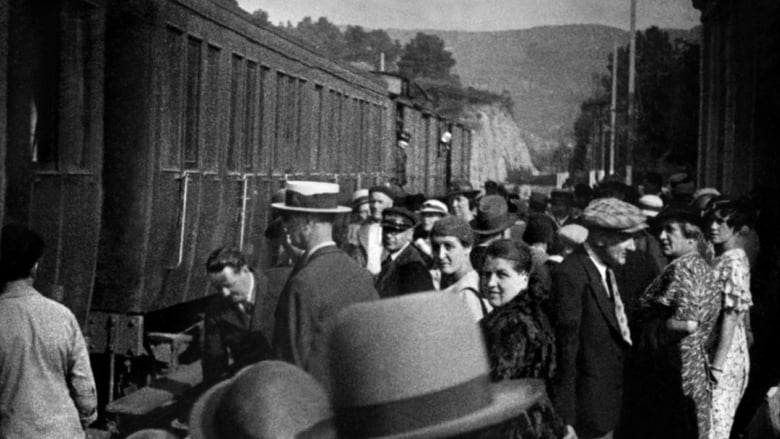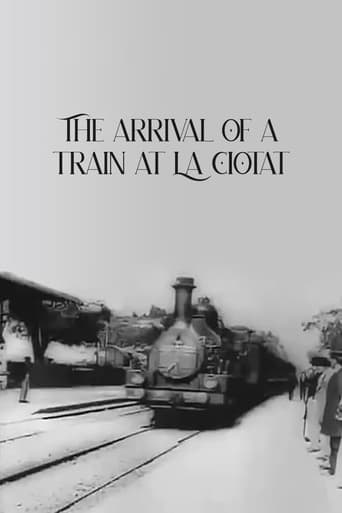
The Arrival of a Train at La Ciotat
October. 10,1897Likely in June 1897, a group of people are standing along the platform of a railway station in La Ciotat, waiting for a train. One is seen coming, at some distance, and eventually stops at the platform. Doors of the railway-cars open and attendants help passengers off and on. Popular legend has it that, when this film was shown, the first-night audience fled the café in terror, fearing being run over by the "approaching" train. This legend has since been identified as promotional embellishment, though there is evidence to suggest that people were astounded at the capabilities of the Lumières' cinématographe.
Similar titles


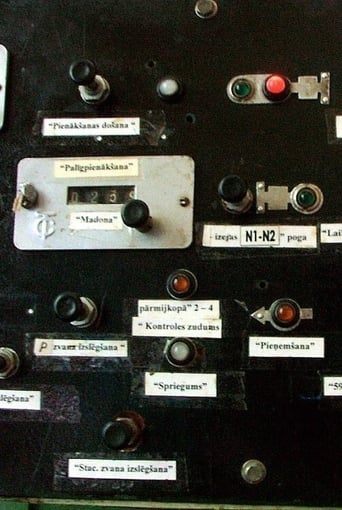
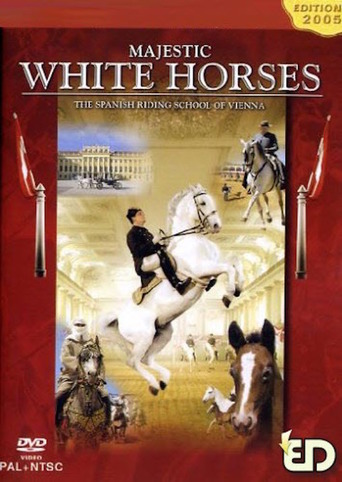
You May Also Like
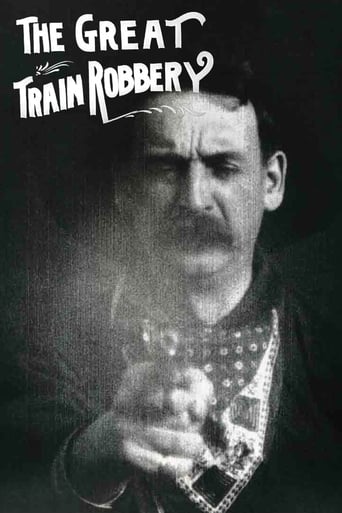

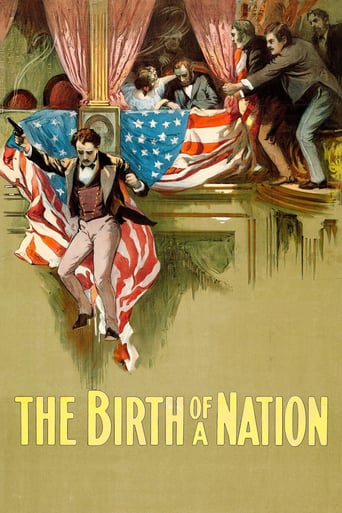

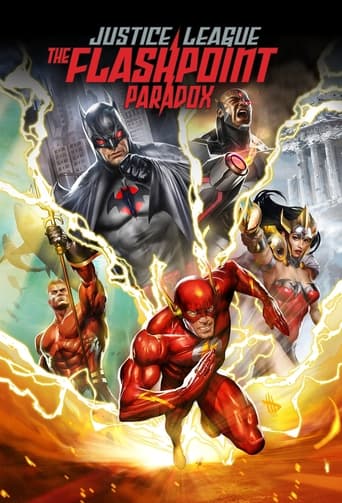
Reviews
Plenty to Like, Plenty to Dislike
It's hard to see any effort in the film. There's no comedy to speak of, no real drama and, worst of all.
The story-telling is good with flashbacks.The film is both funny and heartbreaking. You smile in a scene and get a soulcrushing revelation in the next.
There is, somehow, an interesting story here, as well as some good acting. There are also some good scenes
Many people still mistakenly believe this film was the first motion picture, although it didn't form a part of the Lumière brothers' historic December 1895 Paris screening and wasn't shown until January 1896. Its fame is largely due to the urban myth associated with it, that when it was first shown, audience members screamed, ducked, fainted and ran on the supposition that the approaching train would burst through the screen into the auditorium. While these accounts have been contested, it's likely that the sheer verisimilitude of the cinematic illusion, even in flickering monochrome without synchronised sound, did have an awe-inspiring effect on early audiences.More recent films are also associated with questionable tales of extreme audience reactions, but these are usually works that set out to shock and horrify, like The Exorcist or Alien. For the Lumières, the primary interest was capturing and exhibiting slices of everyday life, though they were clearly already thinking about how to do this most dramatically. So the camera is placed as close as possible to the edge of the platform and behind the point where the front of the train will eventually stop. Thus the locomotive approaches on a trajectory that appears dangerously close to the viewer — the people awaiting the train are all standing safely back from the platform edge on the other side of the camera — and the front of it occupies the maximum possible screen space before disappearing out of the frame.Nonetheless, the people are of at least equal interest to the train itself, which comes to a stop with plenty of running time left. At the start of the film the crowd is clearly visible but static, lined up like a military parade. When the train stops everything suddenly bursts into life with embarking and disembarking passengers and greeters moving in all directions. Like factory gate scenes, arriving trains became a stock subject of early film for similar reasons — they both provided timed events that could guarantee plenty of human movement. The station platform, though, also has the opportunity to match one modern technology with another, the real movement of the railway echoed in the illusory movement of film.
This a famous short film from the Lumiere brothers . Or is that infamous ? The film itself shows a train arriving at a train station La Ciotat , a guard walking up to the train that has now stopped and passengers getting in to said train and is every bit as unremarkable as it sounds But ...... there is a legend that people were so startled and frightened by this short piece of film that let out loud gasps and screams with embellishment over the decades that people fainted or ran out of cinemas screaming and wailing like banshees certain they were going to be squashed by a runaway train hurtling at the speed of light Let's put this myth to bed and point out that the camera angle isn't head on with the train . Even if you were dumb enough to think a train is approaching behind the screen it'll miss the audience But Theo in those days audiences were far less sophisticated weren't they ? Were they ? You got any proof ? Let's remember an Orwell quote : " Each generation imagines itself more intelligent than the one that went before it and wiser than the one that comes after it " What's been the most successful movies in terms of box office for the last ten years ? Ones featuring comic book superheroes ! I rest my case
At just under a minute, L'Arrivée d'un train à La Ciotat (1895) is one of Louis Lumiere's earliest excursions into film-making. As was formulaic with what he called "actualités," or non-narrative shorts, Louis Lumiere set up his cinematographe (a portable crank-handled camera that triples as a film projector and developer) at such an accomplished angle as to catch the arrival of a train at La Ciotat, where it captures the bustling comers-and-goers of the station who happen to stray in front of the lens, looking altogether curious, or else wary of the unfamiliar contraption. The crowd seems lively enough, but just for good measure, Lumiere's refined wife and mother-in-law can be seen actively searching for an imaginary, but eagerly expected passenger. As uninteresting as it is (and it IS, even for the most pretentious film buff), L'Arrivée d'un train à La Ciotat's historical appeal is undeniable, if not legendary. The film's effect upon its first public viewing is a well-worn myth told to enthusiastic film students by their professors. Apparently, initial audiences, unaware of film's capacity to fully imitate reality, fled in fear of the image of a train barreling down upon the screen. The French newspaper, Le courrier du centre, (July 14, 1896) alleged the advancing locomotive made "spectators draw back instinctively fearing they'd be run over by the steel monster." Nevertheless, such a widespread and instantaneous physical response seems foolish or naïve even then, especially when the projector would have been visible and the sound audible to all seated in what at that time passed as a "theater." In reality, it is far more likely that this incident was limited to a few isolated cases, and was later exaggerated to enhance its appeal and boost the film's reputation. Consequently, the commerciality of the venture succeeded with tremendous results. Over a hundred years later, not only is L'Arrivée d'un train à La Ciotat a cinematic icon, but proof of how powerful and impressionable moving pictures could (and would) become. Recommended for those with an interest in film as an art form, or for those looking for early examples of film in history.
SPOILERSWow, I commented on the first film ever made, now I'm commenting on this. I found this to be a little bit better. It was much longer and at least had music, but the Garden Scene was the first film ever, so this one is more complex than the Garden Scene. The music was actually pretty good. This film was actually kind of spooky the way that huge train slowly moves into shot.Again, there is somewhat a plot, but no real one. This is it. People are walking by a train station, then a huge train comes. It slowly fills up half the screen while all the people are walking by. It slowly comes to a halt and some people come off. Then more, and more. Then film ends. It is not much to watch, but it is more than Roadhay Garden Scene. That was only two seconds, this is one minute.Overall, this is a fantastic silent film. This is only the third silent film I have commented on, and this is second silent film I have commented on today. Anyway, I have one thing to say. Watch out for a man in a dark black coat. He comically runs next to the train. I have to admit, that was pretty funny to watch. Anyway, this is a nice little film that will not take you a lot of time to watch, but it is fun nonetheless.9/10Recommended Films: Roadhay Garden Scene.
Top Streaming Movies











